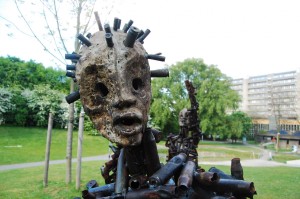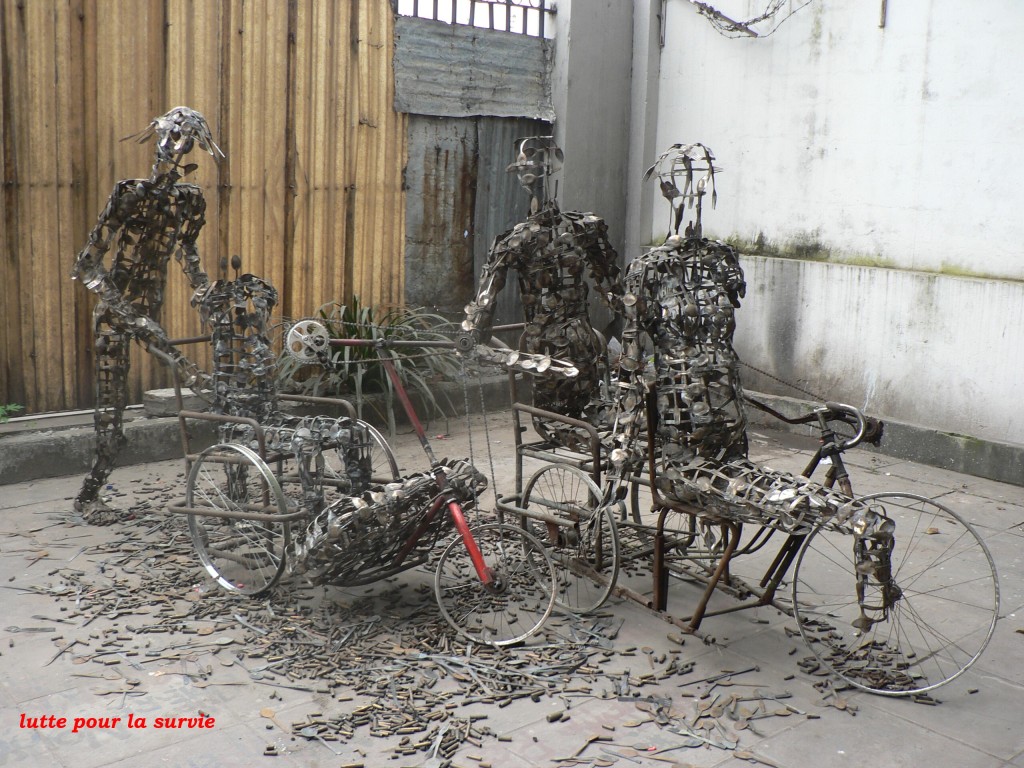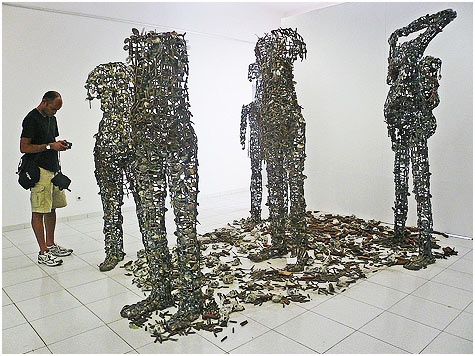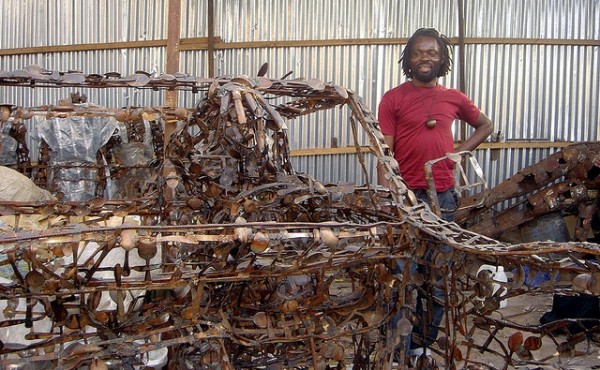
Congo’s “Papa Machete” sculpts life out of death
(Reuters) – It takes a moment to realize that the sculpture, depicting the curve of a pregnant female form, is constructed from tens of thousands of used bullet casings.
Freddy Tsimba fashions his works from the objects that mean the most to him – often those found lying around in his home country of Democratic Republic of Congo.
Given Congo’s past – brutal colonization, dictatorship and successive conflicts which killed millions – the 44-year-old artist has found no shortage either of materials or inspiration.
“For me it’s a matter of memory,” Tsimba told Reuters in the garden of one of his two workshops in the capital Kinshasa.
“War happens everywhere, but people have a tendency to forget, and then it starts again.”
Soft-spoken and with a slight lisp, Tsimba has experienced the trauma of war, having lost a brother during the fighting that has afflicted this central African nation for much of the period since the mid-1990s.
He combs its battlefields for relics of conflict before returning to his studio to create what he sees as works of against-the-odds optimism.
“Congo is like a pregnant female, made of spent cartridges, but who will give birth to a child… For me it’s life that restarts, rising from elements that take away life.”
For many Congolese, life remains precarious and dangerous. Although its wars officially ended nearly a decade ago, the army is still battling rebels in the east of the country, with both sides accused of raping and murdering civilians.
Even in the vast, dilapidated capital, criminal gangs known as “Kuluna” roam. Police do little to prevent them and often work as bandits themselves.
LOCAL INCOMPREHENSION
Tsimba’s sculptures – in which the rusting cartridges are welded seemingly haphazardly together, eventually producing an intricate, web-like effect – have caught the imagination of western art-lovers.
His works have been displayed in Europe, the United States and Canada. Admirers see him as part of a select new generation of Congolese artists producing modern, challenging works.
But his main theme – turning death into life – meets a more mixed reaction amongst fellow Congolese in this overwhelmingly Catholic country.
His latest piece is a house with walls made of 999 machetes: nine, the number of months of pregnancy, holds a special appeal to Tsimba; the number of weapons reflects the scale of violence that has blighted Congo and neighbors such as Rwanda.
When the house was put on display in a busy marketplace in Kinshasa, it created consternation among many residents.
“It’s a message, but we don’t know what we’re supposed to think… We need to know who’s behind this, because people have been killed here with machetes, we’re extremely frightened,” said Riffin Kangamotema, one of a crowd of anxious locals.
But Tsimba is unfazed by the troubled response to his work and the fact people in the street now call him “Papa Machete”.
In a country where music is king – Congolese musicians such as Papa Wemba and Koffi Olomide have near god-like status locally – artists are yet to win much recognition, especially those whose art is seen as challenging or difficult.
“Some people think I am mad, think I am a loser. Here an artist is a musician, if you have hair like mine you’re either a musician or a drug smoker,” he says, shaking his dreadlocks.
Not all of Tsimba’s pieces are as shocking as his cartridge sculptures, with some of his figures created entirely out of spoons or sporting broken video cameras built into their heads.
But for his next major work he is determined to create a stir once more, building an enormous barbecue from oil drums, and placing sculpted human figures on the grill.
He says the work will be a play on Dante’s Divine Comedy, a reference to what he says is the living hell of many Congolese. Tsimba is bracing for another outburst of local incomprehension.
“People are asleep here,” he said. “We have to shock them.”




